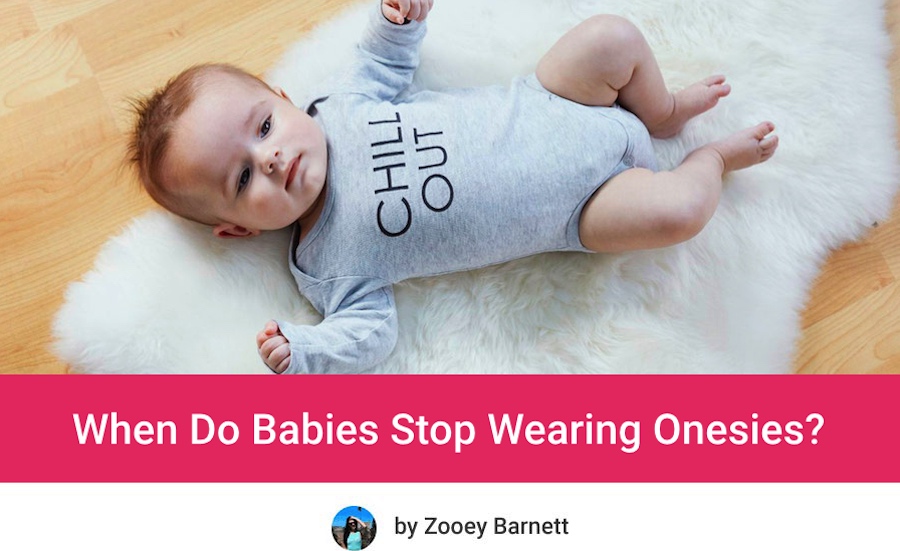
Did you receive 1,042 onesies when your newborn arrived? They make sweet gifts and are so useful during the first months with newborns. However, they just aren’t practical items of clothing with older children.
So why do we use onesies with small babies and both toddlers? This post is all about when do babies stop wearing onesies (and reasons why).
Onesies actually serve a practical purpose for young babies and newborns, keeping their clothes on their body and holding in messes.
However, there comes a time when most babies stop wearing onesies. While it ultimately comes down to personal preference, some babies stop wearing onesies for safety, and other babies wear onesies only during sleep as they get older.
Let’s look at when do babies stop wearing onesies and how to help you decide if it’s time to make the switch with your little one.
This article is not a substitute for medical advice or consultation.
What Are Onesies & Why Do Babies Wear Them?
Onesies are sometimes called baby vests or a ‘bodysuit’ and are basically an undershirt for infants that secures between their legs via a bottom latch that snaps underneath. This holds the onesie in place so it cannot ride up and show off that cute baby belly.
The functionality of a onesie is:
- To prevent baby clothes from riding up and exposing their back or belly to cold air
- To hold in messes and make nappy changes a little bit easier.
While a baby’s wardrobe may consist of mostly onesies at first, there comes a time for all babies or children to stop wearing onesies and move into regular clothes, like separate shirts and bottoms.

When Do Babies Stop Wearing Onesies?
There is no exact age when babies outgrow onesies, but there are 5 factors to consider: walking/moving, potty training, convenience and sizing limit.
1. When Baby Starts Walking
You may want to consider changing up baby’s wardrobe when they start walking.
Some baby onesies are full-length outfits that include cute footed feet. While these are adorable, they post a slipping hazard for walking babies1 – especially on tiled or polished wood floors.
Many parents to choose to ditch the onesie when their babies can stand up independently and want to start cruising (practice walking while holding on to furniture).
Your baby can continue wearing onesies even after they begin walking, as long as you do so safely.
If your little one starts walking and you want to keep them in onesies, make sure to have them wear bottoms or pants with no socks (a slip hazard). Your child should have either bare feet or soled slippes/shoes to give a firm footing as they practice walking.
2. When Baby Starts Potty Training
Another milestone to consider for when your baby should stop wearing onesies is potty training. This may seem obvious, but your baby cannot undo the bottom latch of the onesie independently.
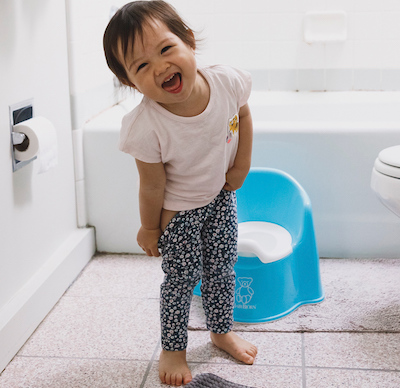
You want easy access clothing, like elastic-waist pants during the fun phase of potty training2. It’s important that you baby’s clothing doesn’t hinder them from doing business when they need to. Parents want to put their little one in baby clothes that he or she can easily remove themself; elastic waisted pants and dresses for the win!
Most babies stop wearing onesies when they start potty training for this reason.
| PRO TIP: Take potty training at your own pace; if you don’t think your child is ready to start potty training, then wait until the right time for your child. Every child is different and they need to be aware of their own body and able to communicate their need to use the toilet in order to reach this milestone. |
3. When Babies Won’t Lay Down For A Diaper Change
Have you ever tried to put a baby in a complete outfit while they are actively crawling around? This is another instance when some parents decide its time for baby to stop wearing onesies.
Many parents phase out the onesie when their baby won’t lay still for a nappy changes (or even screams when getting the diaper changed), let alone for them to properly snap down the onesie between the legs.
This often begins around the same time baby starts walking, but could even be as soon as babies begin to crawl.
The world may be just too exciting and they can’t wait around for silly things like clothing to keep them from exploring. In such cases, it all comes down to convenience: you may want to stop dressing your baby in onesies and move on to t-shirts and pants to shave off the time it takes to get your baby dressed.
| PRO TIP: Another good idea is to reach for pull-up style nappies that you can put on your little one while they are standing up, as it may feel like wrestling a crocodile to dress them while they are laying down! |
4. When There Are Few Onesie Sizes For Your Baby
Finally, there comes a point when it may be difficult to find onesies in your child’s size3. Typically, onesies only go up to 18 or 24 months (or, 2 years, maximum).
Now, this isn’t to say that your baby cannot wear onesies for longer, just that it may be a challenge to get onesies in toddler sizes. And, if you’ve been blessed with a big baby or very healthy child that is already wearing size 24 months at only 14 months, you may be out of options for onesies before this age.
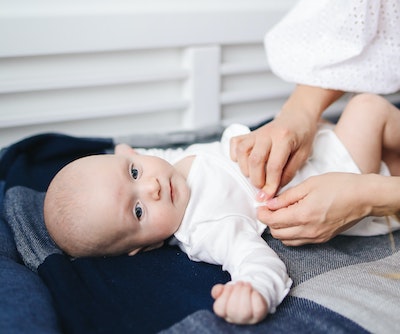
If you think your little one his about to outgrow their onesie, don’t be afraid of switching ot regular clothes. Since they aren’t a newborn anymore, it’s not such a big deal with their shirt rides up every now and then. But if they continue wearing a onesie that is too tight, you could end up with other issues:
- Compression leaks (a too-tight onesie that pushes poop out of the diaper! yuck)
- Not comfortable and may cause the baby pain when walking or crawling
Remember, your baby is eventually gong to ourgrow all their baby clothes; this is hard, but it’s a good thing, too! Pack your favorite onesies away in storage for memories (or if you plan to have more children) and celebrate that they are growing up.
Baby Onesies – FAQ
Most newborns wear onesies under their other clothes.
You’ll probably have a large stash of onesies for ages 0-3 months, 3-6 months, and 9 months. But once your little one hits 12 months, pay attention to their development to see if it’s time to ditch the onesie.
This could be about comfort, as well as their routine (for parents just as much as for the babies, if you have a wriggler!)
Why Do Babies Wear Onesies Instead Of Shirts?
Baby shirts generally ride up as newborns or young children are carried or curl up in their sleep. A onesie secures around baby bottoms and between their legs, preventing exposed skin.

They also provide additional enough warmth, since newborns need to wear an extra layer of clothes.
Finally, onesies help hold in nasty messes from poop explosions, sometimes saving the outer clothing from being soiled.
In short, many babies do wear a onesie and a shirt as part of their full outfit. When there are high temperatures, you may see a baby dressed only in a onesie, though.
Should A Baby Always Wear A Onesie?
There is no rule that a baby should always wear a onesie! This depends on several factors, including weather, your child’s age and preference, and if they are attending daycare.
-
Weather
Onesies are a nice underlayer in cooler weather. You may one to dress your baby in one for colder temperatures to be assured they will be warm and cozy, their sweater and shirt might ride up, but their skin will not be exposed.
However, in warmer weather it may not be necessary.
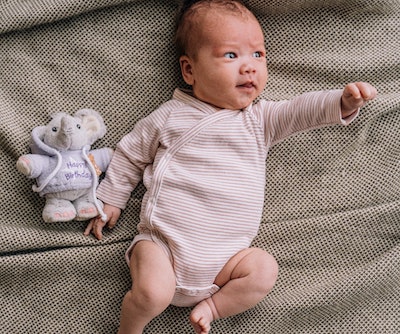
Baby sleep experts suggest that baby’s room or nursery be between 68-72°F to avoid overheating and increased risk of SIDS4. If your thermostat is set to 70 degrees Fahrenheit, and your little one is in long sleeves, they may no need an additional onesie to be warm at night.
-
Age And Preference
Most babies 6 months and under wear onesies, as they help keep baby’s clothes from riding up, and hold in diapers (which may not entirely prevent blowouts or diaper messes, but significantly contain the mess).
Of course, no one can wear onesies forever; your baby will eventually outgrow onesies, but that happens at different stages for all babies.
As your baby becomes more independent, you may naturally notice a preference for two-piece clothing because of how much they wriggle and squirm when you try to dress them in a onesie.
Some babies prefer the comfy, close fit of onesies, while others want more loose-fitting clothes as they grow.
-
Prevents Removal Of Diaper
Some babies (usually when they first start walking) go through a phase where they figure out how to undo diaper tabs and may just undress anytime, anywhere. If they are in daycare, this could be a major disaster.
One simple way to prevent this is to put them in a onesie overtop their diaper.
Some parents choose to use the onesie until their children get over this ‘pull of the pull-ups’ stage.
Of course, when baby starts potty training, you’ll want to ditch the onesie so that your baby can get to the toilet without the need to undo too many snaps or buttons.
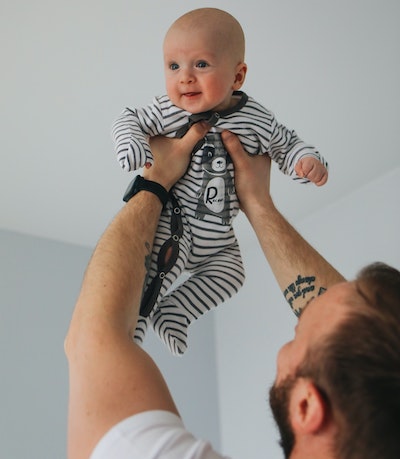
Why Do Baby Onesies Have Overlapping Shoulders?
Those cute shoulders aren’t just for looks: they are for blow-outs.
Overlapping shoulders on onesie pajamas or shirts mean that you can pull the entire outfit down, off the shoulders and around baby’s chest, without needing to pull it over baby’s head.
Sure, you’ll dress your baby in the onesie by pulling it over their head, but if they’ve had an explosion in their diaper that is all over their back, you don’t want to get if on the back of their head and hair, too! This is when you pull the onesie down over baby’s body, not up over their head.
The overlapping shoulders allows for this wider opening to pass over baby bellies and shoulders, and save you from an even bigger mess. God bless whoever invented this design for baby clothing.
When Should Babies Stop Wearing Footie Pajamas?
This is a hard one because they are so cute! I would dress my little one in these full-length onesies until they turned ten, if I could.
However, practically speaking, if you’re potty training or encouraging your older child to be dry at night, this style of sleep attire really inhibits your child’s independence and therefore could interfere with using the bathroom on their own5.
Some parents decide to use fleecy full-length onesies during cold weather months, as they do such a good job of keeping little ones warm even if they kick off their blankets, this means you’ll need to be more hands-on for nighttime potty training, though.
Ultimately, you decide: do you want your little one to come to use and ask for help with the zipper, or do you want them to be more independent? Once they can unzip the onesie by themselves, you could always go back to using the adorable full-length onesies again.
What Age Can Babies Wear 2-Piece Pajamas?
When your infant is able to sleep with blankets or stuffed animals in their bed (after 1 year of age) they could wear a 2-piece outfit for sleeping.
You may like warm, fleecy night clothes for your toddler, or decide they should sleep in a baby sleep sack. This one is all about parents’ preference.
Final Word
To answer the question “when do babies stop wearing onesies”: there is no set age, parents should pay attention to their child’s development and milestones and decide what is best based on their needs for potty training, independence and comfort.
The purpose of this article is informative. It’s not a substitute for professional medical advice or medical care. Remember: safety first! Consult your doctor/pediatrician in case of any doubts. The author of this article does not accept any responsibility for any liability, loss or risk, personal or otherwise, incurred as a consequence, directly or indirectly, from any information or advice contained here.
Resources:
https://www.webmd.com/
https://www.anniebabymonitor.com/
https://kytebaby.com/

